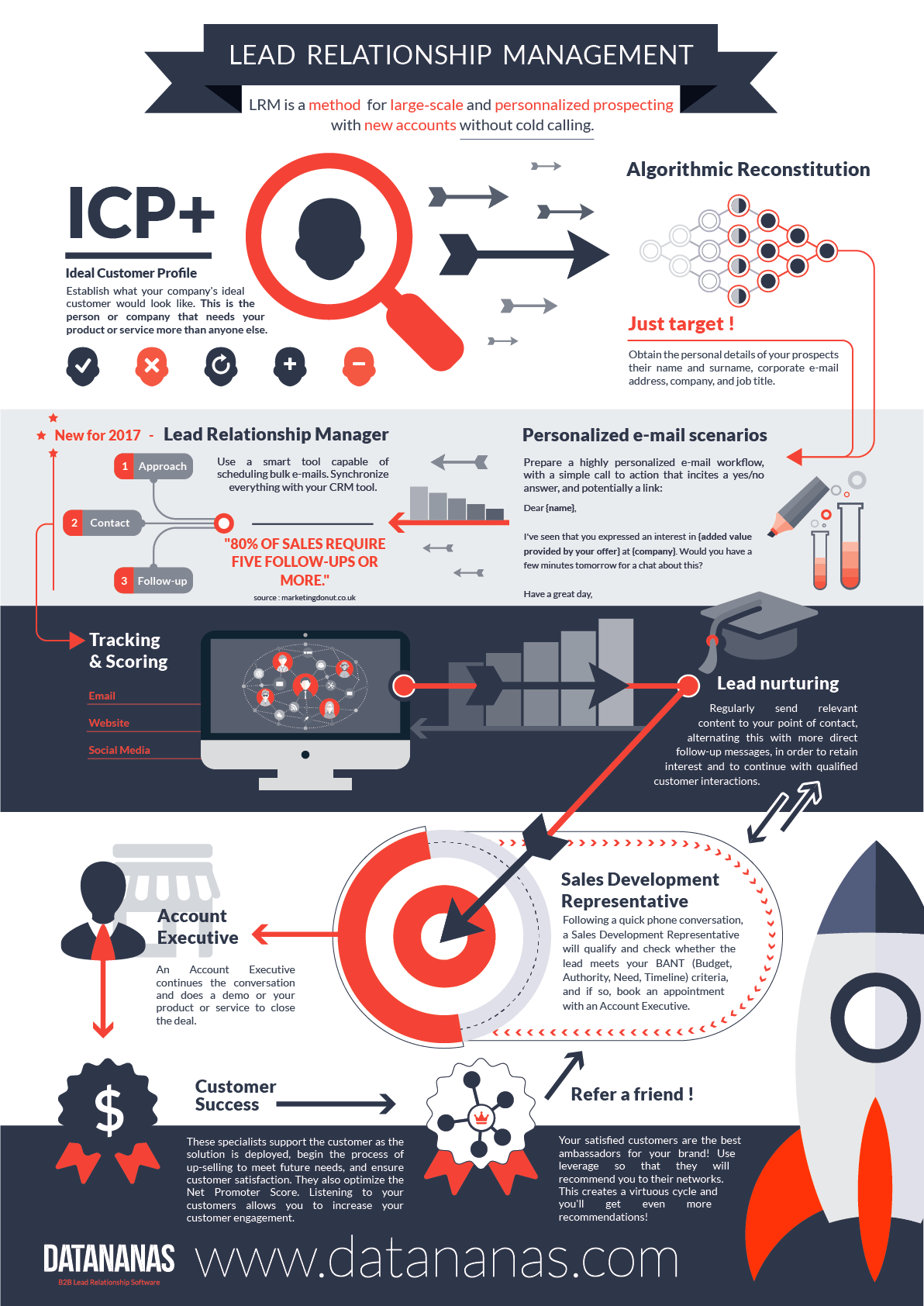Most of us are used to using a Customer Relationship Management, or CRM tool. This development, which allows us to consolidate all our customer data in a single location, was the first stage in the revolution that the sales process is currently undergoing. The second part of the revolution is LRM or lead relationship management.
This is a major development in the way that we follow up with our customers.
In the final analysis, barely a decade ago, hardly any businesses had their own CRM, and the tool was primarily restricted to large enterprises. Now, however, millions of people use it on a daily basis. Customer habits have followed a similar path. As they have become more and more demanding, knowing them better has become essential, and building customer loyalty has become a business priority.
Now that there is a dedicated tool for managing customers and generating their loyalty, companies have the same kind of need for managing the relationship with their leads : how can they build a relationship with leads to close deals, before they even cross the CRM threshold ? This answer is simple : with Lead Relationship Management.
Engaging your leads in the conversion process
Lead Relationship Management is the first step in identifying and converting potential customers. The idea is to consolidate all Sales and Marketing activities, with the goal of establishing contact with a lead and then optimizing the newly established relationship.
Once contact has been made with prospects by the Lead Generation team, the lead is qualified by the Sales Development Representative. If the dedicated team considers that the lead is qualified, it is passed to Account Executives, whose role is to close the deal with the prospect.
Details of a Lead Relationship Management Strategy
Before getting in touch with prospects, defining an Ideal Customer Profile is a required step. From this moment on, you can start to consider building a list of prospect. Instead of buying or renting one, we recommend using professional social networks, which is a much more up-to-date data source.
In the context of an active prospecting strategy using Outbound Sales campaigns, the key to success is combining personalization with automated follow-ups. Ideally, you would even have a smart LRM tool that’s capable of filtering data, adapting follow-ups depending on responses received to e-mails, and qualifying interactions with leads such as initial approaches, click-throughs, and so on.
As soon as a lead is engaged, a Sales Development Representative takes up the baton to carry out a personalized qualification exercise. If the result is favorable, an Account Executive pursues the conversation with the lead. If the lead needs more time to mature, a Lead Nurturing stage is appropriate. This involves the lead receiving a new set of automated, personalized e-mails, regularly sharing high value-added content to maintain the relationship.
Once the discussion with the Account Executive has concluded, the lead becomes a customer and can be transferred into the CRM system, which will handle further conversations and build the customer’s loyalty.
